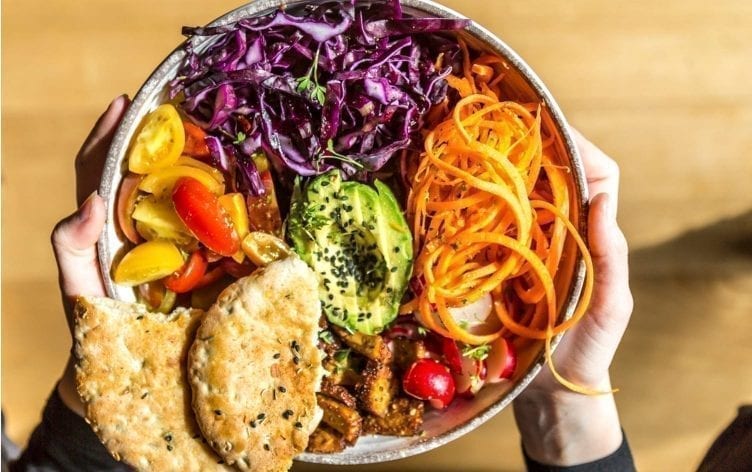If eating more plant-based foods for better health wasn’t motivating enough, maybe eating for a better planet will do the trick. There’s a new diet in town. Dubbed the “planetary health diet,” it’s a broad eating plan put forth by a group of 37 scientists hailing from 16 countries. According to the experts behind the research, which was published in the Lancet, following the diet could have a significant impact — to the tune of reducing premature deaths by about 11 million per year and reducing harm to the planet.
To break down the rationale: The world’s population is estimated to hit 10 billion people by 2050. Given our current eating and food production habits, that will take a major toll on the environment, increasing greenhouse gases and negatively affecting climate stability and biodiversity.
According to the study: “Without action, the world risks failing to meet the UN Sustainable Development Goals and the Paris Agreement, and today’s children will inherit a planet that has been severely degraded and where much of the population will increasingly suffer from malnutrition and preventable disease.”
Basically, our planet is in trouble, and eating better may be our way out of this mess.
HOW IT WORKS
Think of it more like a broad philosophy and less like a traditional diet. The planetary health diet hopes to change the way we consider food. Much of this change involves reducing our reliance on meat — particularly red meat. Livestock is a major contributor to greenhouse gases, and raising livestock requires an abundance of land and water.
“Transformation to healthy diets by 2050 will require substantial dietary shifts,” writes Dr. Walter Willett, lead author of the paper and a professor at Harvard T.H. Chan School of Public Health. “Global consumption of fruits, vegetables, nuts and legumes will have to double, and consumption of foods such as red meat and sugar will have to be reduced by more than 50%.” He goes on to note that a diet that prioritizes plant-based foods over animal sources can benefit both our health and the environment.
Such an overhaul requires a shift in food production on the global level. But to begin at home, it would help to put down that steak and pick up a vegetarian curry instead.
GETTING STARTED
Shifting your diet can and should be a gradual process. “One has to be realistic and sustainable with eating goals,” says Leslie Bonci, the registered dietitian behind Active Eating Advice. That means not making a wholesale transformation overnight, as doing so is unlikely to result in lasting change. “To significantly increase produce [consumption] and decrease red meat, one needs to start with the familiar,” she adds.
Bonci provides a couple tips for gradually reducing meat intake. These are familiar foods that make the transition to a plant-focused diet easier:
- Make your burger patties half meat, half mushroom or include mashed black beans.
- Use legume-based pastas, such as those made from lentils and chickpeas.
- Put more vegetables on your plate; while also providing some protein they can be topped with a meat substitute.
DIETARY TARGETS
To follow the planetary health diet, you should organize your plate so at least half is full of vegetables and fruits. The other half should consist mostly of whole grains and dairy, followed by plant proteins like legumes, unsaturated plant oils and modest amounts of animal protein, if desired.
Specific daily targets include 300 grams of vegetables, 250 grams of dairy, 200 grams of fruit and 50 grams of nuts. Combined with other foods, the suggested diet tallies up to 2,500 calories per day, which is more than many people need. So, it’s certainly not a diet that advocates calorie restriction. However, if you’re looking to lose weight, you can modify the plan accordingly.
To meet these goals, Bonci says it’s important to include produce at all meals. Fruits and vegetables are an easy addition to smoothies at breakfast, while salads or vegetable wraps make for a healthy lunch. Snacks like veggies and hummus or nuts can keep you on track throughout the day. For dinner, Bonci likes stir-fries, which offer opportunities to put more plants on your plate.
THE BOTTOM LINE
“At the end of the day, we all need to take responsibility for the health of the planet by buying only what we need, wasting less, throwing away less and sharing the excess,” says Bonci. She notes that increasing our produce intake can make us healthier, all while benefiting the planet — which is a seriously helpful side effect.

